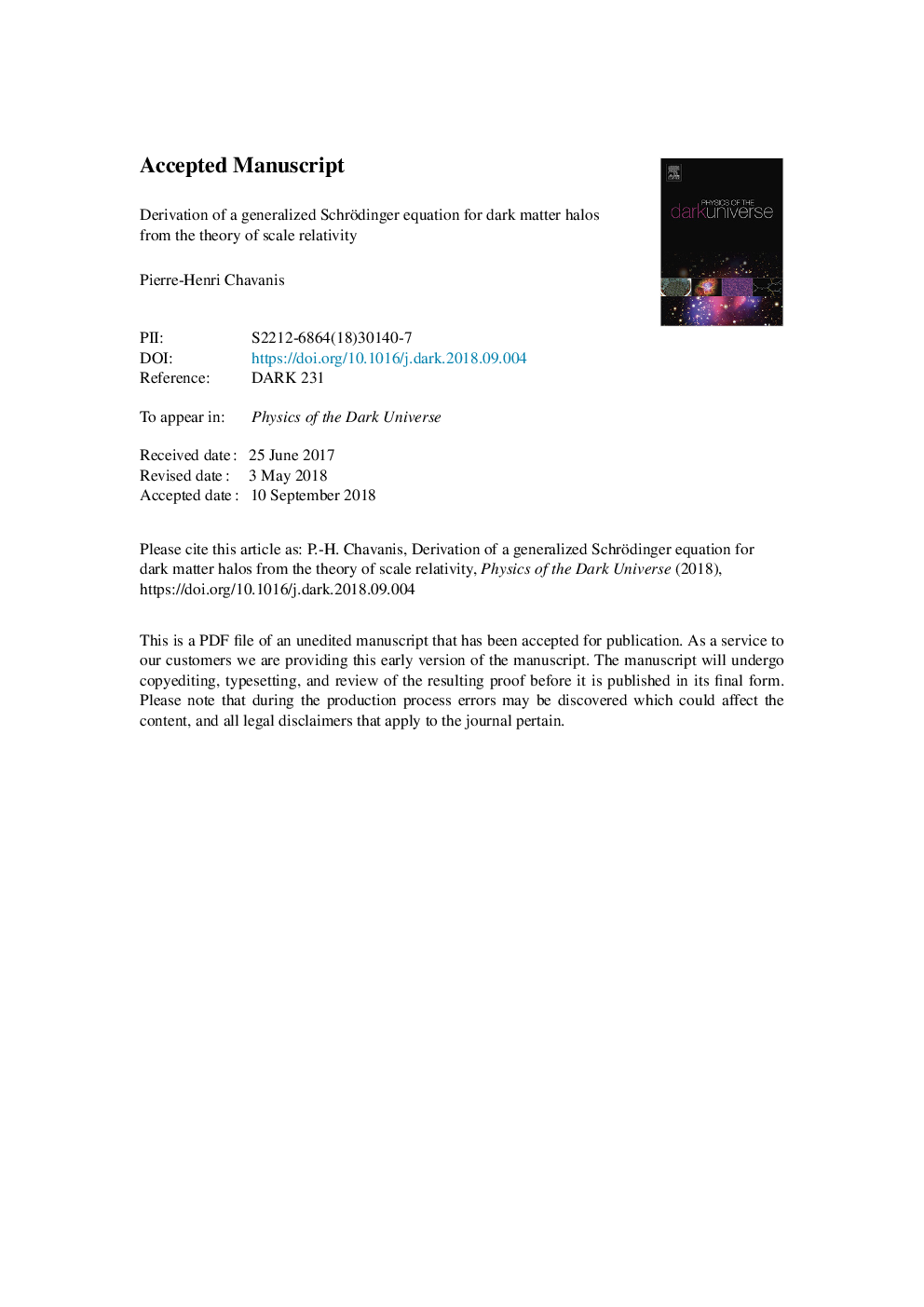| کد مقاله | کد نشریه | سال انتشار | مقاله انگلیسی | نسخه تمام متن |
|---|---|---|---|---|
| 11007518 | 1523844 | 2018 | 23 صفحه PDF | دانلود رایگان |
عنوان انگلیسی مقاله ISI
Derivation of a generalized Schrödinger equation for dark matter halos from the theory of scale relativity
دانلود مقاله + سفارش ترجمه
دانلود مقاله ISI انگلیسی
رایگان برای ایرانیان
کلمات کلیدی
موضوعات مرتبط
مهندسی و علوم پایه
فیزیک و نجوم
نجوم و فیزیک نجومی
پیش نمایش صفحه اول مقاله

چکیده انگلیسی
Using Nottale's theory of scale relativity, we derive a generalized Schrödinger equation applying to dark matter halos. This equation involves a logarithmic nonlinearity associated with an effective temperature and a source of dissipation. Fundamentally, this wave equation arises from the nondifferentiability of the trajectories of the dark matter particles whose origin may be due to ordinary quantum mechanics, classical ergodic (or almost ergodic) chaos, or to the fractal nature of spacetime at the cosmic scale. The generalized Schrödinger equation involves a coefficient D, possibly different from ħâ2m (where ħ is the Planck constant and m the mass of the particles), whose value for dark matter halos is D=1.02Ã1023 m2/s. This model is similar to the Bose-Einstein condensate dark matter model except that it does not require the dark matter particle to be ultralight. It can accommodate any type of particles provided that they have nondifferentiable trajectories. We suggest that the cold dark matter crisis may be solved by the fractal (nondifferentiable) structure of spacetime at the cosmic scale, or by the chaotic motion of the particles on a very long timescale, instead of ordinary quantum mechanics. The equilibrium states of the generalized Schrödinger equation correspond to configurations with a core-halo structure. The quantumlike potential generates a solitonic core that solves the cusp problem of the classical cold dark matter model. The logarithmic nonlinearity accounts for the presence of an isothermal halo that leads to flat rotation curves (it also accounts for the isothermal core of large dark matter halos). The damping term ensures that the system relaxes towards an equilibrium state. This property is guaranteed by an H-theorem satisfied by a Boltzmann-like free energy functional. In our approach, the temperature and the friction arise from a single formalism. They correspond to the real and imaginary parts of the complex friction coefficient present in the scale covariant equation of dynamics that is at the basis of Nottale's theory of scale relativity. They may be the manifestation of a cosmic aether or the consequence of a process of violent relaxation and gravitational cooling on a coarse-grained scale.
ناشر
Database: Elsevier - ScienceDirect (ساینس دایرکت)
Journal: Physics of the Dark Universe - Volume 22, December 2018, Pages 80-95
Journal: Physics of the Dark Universe - Volume 22, December 2018, Pages 80-95
نویسندگان
Pierre-Henri Chavanis,